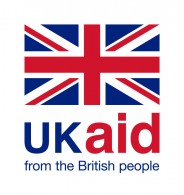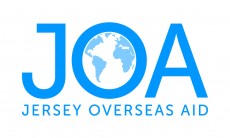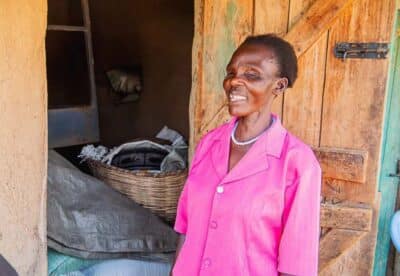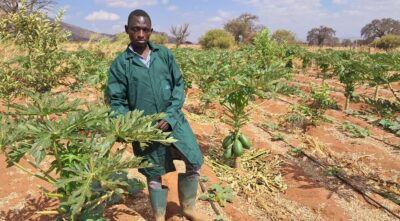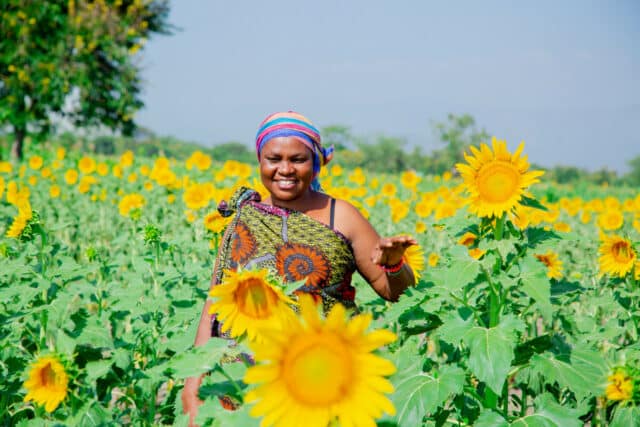Expert view
13 October 2020
Goat Power: Q&A with Dr Emmanuel Egaru
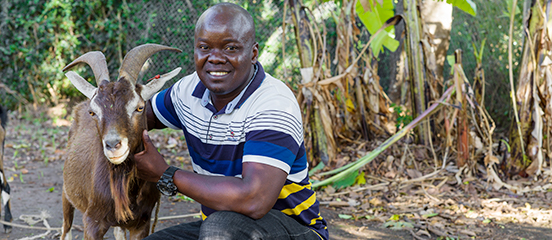
Photos: Chris De Bode/ Panos Pictures for Farm Africa
In celebration of Farm Africa’s photography exhibition Goat Power this October, we spoke with Dr Emmanuel Egaru, a livestock specialist, about his work with Farm Africa’s Livestock for livelihoods project in Karamoja, Uganda.
Tell us about a typical day at Farm Africa
We try to get to the project site early due to the unpredictable security situation in the region. We do our best to make sure all of our activities are well planned and that everybody we are going to meet is told ahead of our visit, to maximise our time with community members.
Sometimes we make it back it back to the office in time to have some lunch, but more often than not we don’t get back till 4pm.
What do you do when you’re at the project site?
Whenever I’m there, the first people I get in touch with are the Community Animal Health Workers, the people that are in charge of animal health care in the communities. I have trained them and I provide a monitoring, planning and supervisory role to them.
Training usually takes two weeks because most are not formally educated in animal health care. I teach them the basic skills necessary to take care of the livestock. As the women are agro-pastoralists, it’s common for them to keep moving from one place to another, we train people that are able to move with them, instead of having an office-based person like me to find where they have moved to.
I do spot checks on the bucks and the goats that Farm Africa has given to them when I’m visiting. I interview women on the health of their goats and give them advice when necessary.
What’s the most important advice that you tell the communities about looking after goats?
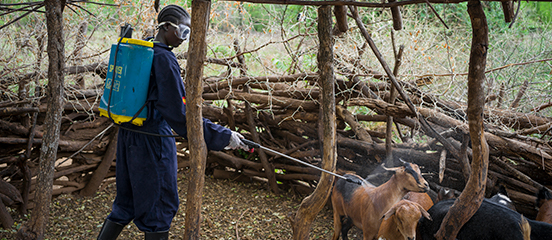
To keep the environment clean and to make sure goats are sprayed routinely. The spraying of the goats kills ecto-parasites, which include ticks, fleas, mites and flies, like tsetse flies. These are vectors that transmit diseases. When you spray the goats routinely, the vectors are killed and the animals are prevented from getting diseases that could be transmitted by these vectors. This process will ensure animals are more productive, and will stop them needing treatment.
By more productive I mean the goats will give higher outputs, like producing more milk. Having an ill animal, maybe affected by worms or another condition, will mean they will provide less milk and give less back to the person feeding it.
What was local people’s knowledge of goats and their care in this region like before this project started?
There has been basic traditional knowledge about goat care in this region but the project has really contributed to increasing their knowledge.
An example is tick control: if you asked most of them how to control ticks they will tell you to hand pick them and throw them in the fire. We tell them that spraying goats kills ticks that you cannot see with your eyes. You cannot pick all of them as they are very tiny under the hair, so when you spray it kills all of them. This is all new information for the community and goes against the traditional methods they used for many years. They really appreciate the new knowledge we are giving them, it has improved the way they are keeping their animals and they are telling us that their herd sizes are increasing.
When I go to the field I find out from Community Animal Health Workers the most prevalent diseases in the area that are effecting livestock. I then go back to the drawing board and design an intervention.
They also tell me about diseases that they feel they do not have the knowledge to treat and I guide them on the dosage and how to handle these kinds of diseases. There are risks to this process, you must closely monitor and mentor Community Animal Health Workers as most do not know how to read and write. You need to follow up with them on how to administer each drug to minimise the risks of anti-microbial resistance. That’s why I do regular visits to the project sites.
What training have you had yourself?
I trained in veterinary science. I did a Bachelor of Veterinary Medicine at the Makerere University in Uganda. It took me five years to get my BSC. I’m now studying a masters (MSc) in veterinary epidemiology and public health in the University of London; at the Royal Veterinary College, through a distance programme.
What difference are you seeing that the project is having on women’s lives in this area?
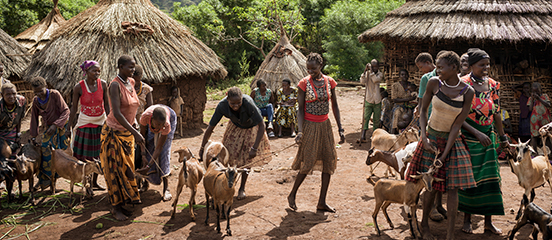
The project is making a big difference to women’s lives in the region. What I appreciate is being able to bring women into groups, organised groups, and give them knowledge. Knowledge to help them, despite their financial situation, to start a small business and be economically empowered.
The other things that the project has given them is knowledge of the importance of self-care, how to take good care of your neighbourhood, to love each other and work together with other women in their community as a team.
The project has given these women goats to improve the nutrition of their households by having a source of milk. Initially we thought of bringing in new dairy goats to Karamoja, but from a technical point of view we also felt it would be good to build upon the local genes, breed goats that are more resistant to diseases. We decided to have the local female goats sourced from within the region, then we brought in the Toggenburg bucks so that the offspring would benefit from antibodies and genetic resistance from both goats.
The women have really taken on caring for the goats, which are multiplying. They now have a source of milk to give to their children who are mainly malnourished. We are hopeful that when these goats multiply, the women will also have a source of income through the sale of the goats themselves. We are also encouraging women to process the milk into products that can be packed and sold commercially.
Can you tell us more about plans to help women add value to their goats?
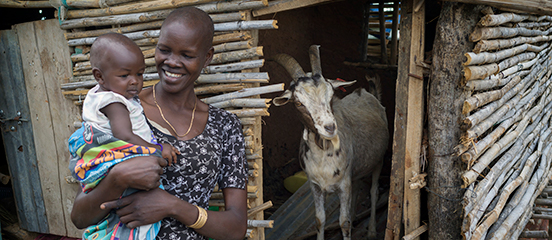
We are coming up with a scheme where women can get marketing training so they are better equipped to sell their produce. When goats produce male goats, we are advising the women to castrate them, fatten them up so they can later sell them for a higher value for meat.
Alongside this, we are also encouraging the women to continue traditional crafts such as making beads, bangles, bags and traditional clothing. This all can be marketed and sold locally. Later on we will look at how to produce these for external markets.
You can find out more about Farm Africa’s Livestock for livelihoods project here and see for yourself the impact of goats this October at Farm Africa’s photography exhibition Goat Power. The free outdoor exhibition will take place throughout the month of October 2020 on More London Riverside, on London’s South Bank.
We are carrying out this work in partnership with the Africa Innovations Institute, and the Mothers and Children Multisectoral Development Organisation, an NGO that works to improve the lives of disadvantaged mothers and children. This project is funded with UK aid from the UK government and Jersey Overseas Aid, however, the views expressed do not necessarily reflect the UK or Jersey governments’ official policies.
